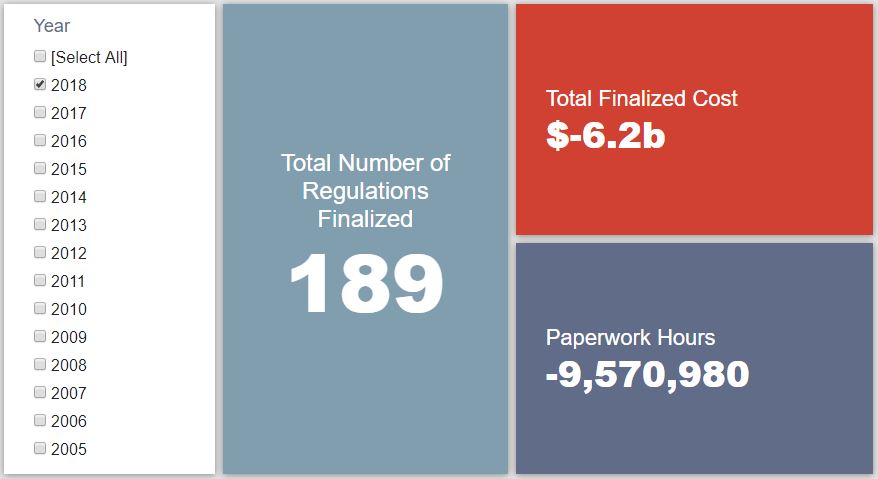Week in Regulation
August 27, 2018
Record-Breaking Deregulatory Proposal Comes Down the Road
While it has technically been out for weeks now, the Trump Administration’s long-heralded proposed replacement for future light vehicle fuel standards officially hit the Federal Register last week. And it hit with a bang as it is far and away the single most cost-cutting rulemaking the American Action Forum (AAF) has recorded since 2005. Between both proposed and final rules last week, agencies published roughly $563.2 billion in net cost savings, and 97,365 hours of new paperwork. The per capita regulatory burden for 2018 is negative $18.77.
Regulatory Toplines
- New Proposed Rules: 36
- New Final Rules: 65
- 2018 Total Pages of Regulation: 43,243
- 2018 Final Rules: -$6.2 Billion
- 2018 Proposed Rules: -$537.3 Billion
Tracking Regulatory Modernization
The joint proposal entitled the “Safer Affordable Fuel-Efficient (SAFE) Vehicles Rule for Model Years 2021-2026 Passenger Cars and Light Trucks” (SAFE Vehicles Rule)” out of the Department of Transportation and Environmental Protection Agency would scrap the Obama-era Corporate Average Fuel Efficiency standards for Model Years (MY) 2021-2016 and project out the standards from a MY 2020 level. AAF’s Dan Bosch provides a greater summary of the proposed rule here. Per agency estimates, this proposal could bring more than $563 billion (with a B) in lifetime savings, or $26.5 billion annually. For perspective, AAF has tracked roughly $1.1 trillion in final net regulatory costs since 2005. If finalized as-is, this rulemaking would singlehandedly cut that total in half. This obviously will eventually have implications for the regulatory budget under Executive Order (EO) 13,771, but its savings do not currently accrue given its proposed rule status.
According to AAF analysis, since the start of FY 2018 (beginning Oct. 1, 2017), executive agencies have promulgated 52 deregulatory actions with quantified estimates against 11 regulatory measures, under the rubric created by EO 13,771 and the administration’s subsequent guidance document on the matter. These rules combine for net annual savings of roughly $1.6 billion. This means that agencies have thus far surpassed the administration’s cumulative goal for FY 2018 of $687 million in net annual savings by nearly $1 billion. According to earlier AAF projections based on the administration’s latest Unified Agenda, agencies were on track to roughly double that goal. If this current trend holds, they may well exceed that expectation too.
Click here to view AAF’s examination of the administration’s progress under the “one-in, two-out” executive order through the end of Fiscal Year 2017.
State of Major Obama-Era Initiatives
Based on total lifetime costs of the regulations, the ACA has imposed costs of $52.9 billion in final state and private-sector burdens and 176.9 million annual paperwork hours.
Since passage, the Dodd-Frank financial reform legislation has produced more than 82.9 million final paperwork burden hours and imposed $38.9 billion in direct compliance costs.
Total Burdens
Since January 1, the federal government has published $543.5 billion in net cost savings (with $6.2 billion in net savings from final rules) and paperwork burdens amounting to roughly 8.5 million hours (including 9.6 million hours of paperwork reduced under final rules). Click here for the latest Reg Rodeo findings.











